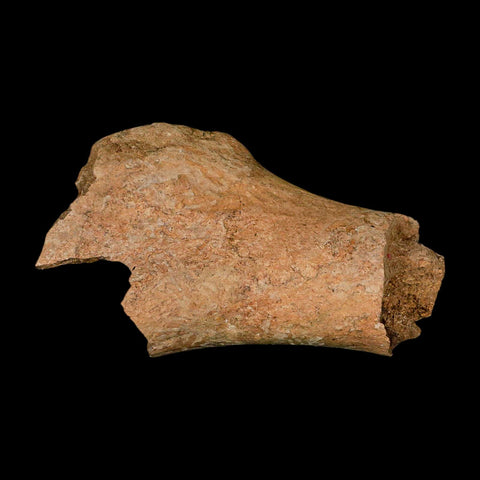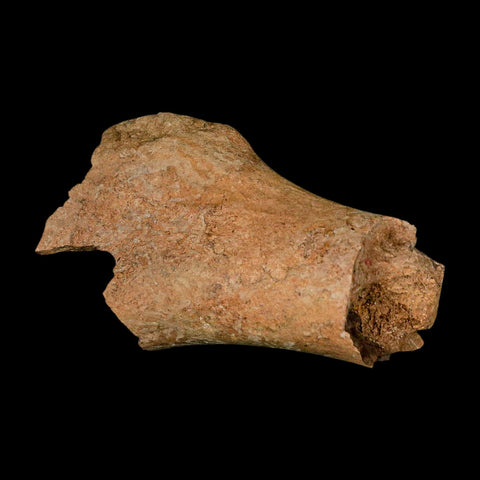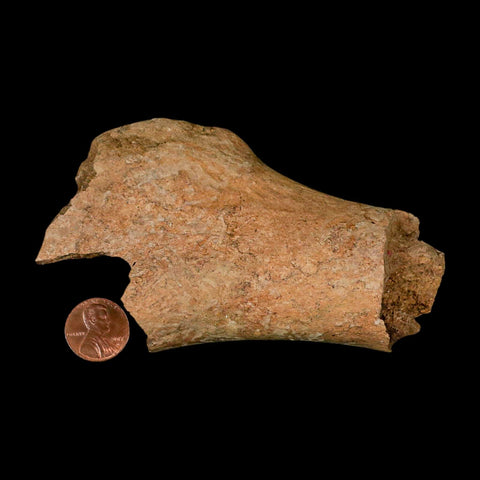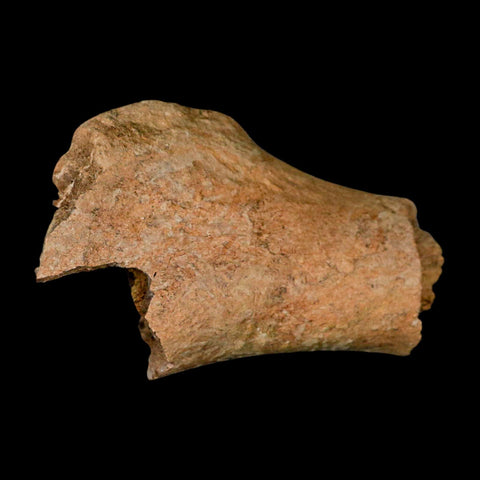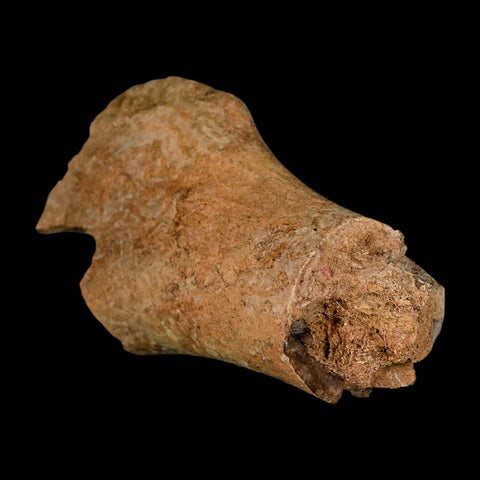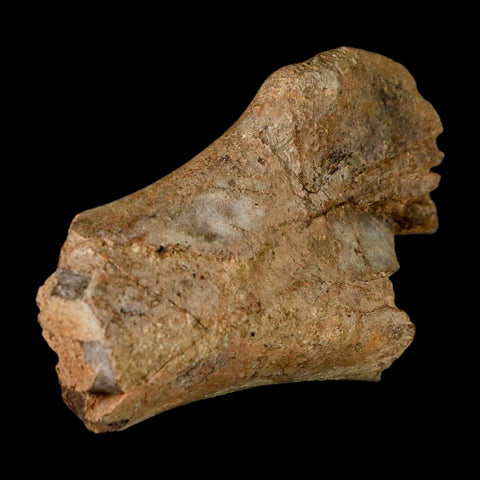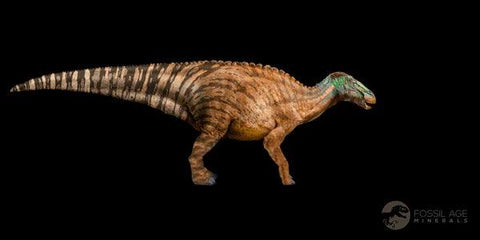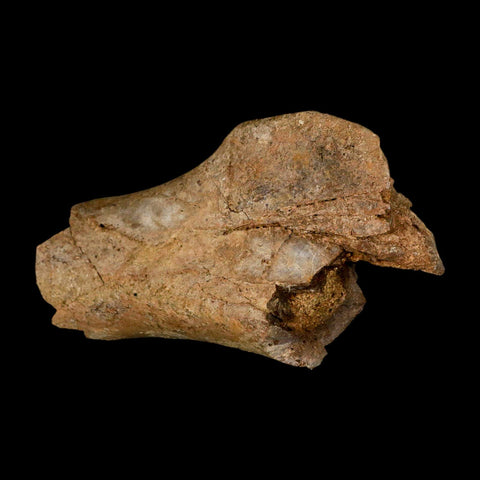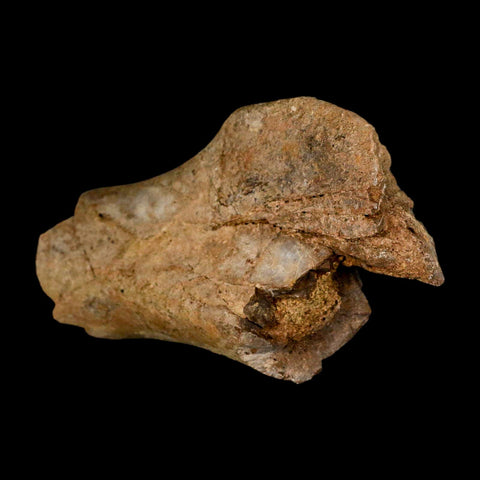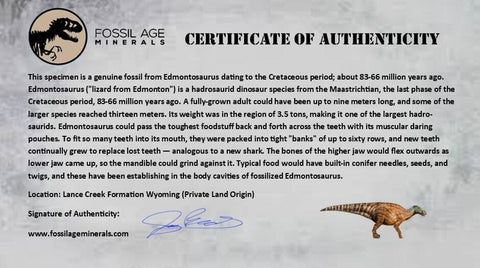4.6" Edmontosaurus Fossil Humerus Bone Lance Creek FM Cretaceous Dinosaur WY COA
Location: Lance Creek Formation, Wyoming (Private Land Origin)
Weight: 7.7 Ounces
Fossil Dimensions: 4.6 Inches Long, 2.6 Inches Wide, 1.3 Inches Thick
Comes with a Certificate of Authenticity.
The item pictured is the one you will receive.
Edmontosaurus, meaning “lizard from Edmonton,” was a remarkable hadrosaurid dinosaur that lived during the Maastrichtian stage of the Late Cretaceous period, approximately 71–65 million years ago. Native to North America, adults could grow up to nine meters in length, with some species reaching thirteen meters, and weighed around 3.5 tonnes, making it one of the largest herbivorous dinosaurs in its ecosystem.
A defining feature of Edmontosaurus was its highly specialized feeding system. Its jaws contained up to sixty rows of tightly packed teeth, constantly replaced to handle wear, similar to modern sharks. Muscular cheek pouches allowed food to pass efficiently across the dental battery, enabling it to chew tough vegetation such as conifer needles, seeds, and twigs. The jaw bones flexed outward during chewing, providing an effective grinding mechanism that supported its role as both a ground-level feeder and a low tree browser. Fossil evidence, including preserved body cavities, confirms its diet and feeding strategies.
The discovery of fossilized skin imprints in Wyoming in 1908 revealed scaly, leathery skin and tubercles along the neck, back, and tail, highlighting its distinctive duck-like appearance. Edmontosaurus was primarily bipedal, but it could also move on all fours. Its forelimbs, featuring hooves and weight-bearing pads, complemented strong hind limbs powered by robust muscles. The downward-tilted spine enabled a low posture, optimizing feeding close to the ground.
Despite its massive size and strength, Edmontosaurus lacked prominent physical defenses. Instead, it relied on keen eyesight, acute hearing, and a sharp sense of smell to detect predators early, navigating a world shared with large theropods. Its anatomy, feeding adaptations, and locomotion illustrate the evolutionary success of hadrosaurid dinosaurs in Late Cretaceous North American ecosystems.
Studying Edmontosaurus provides valuable insights into the diversity, paleoecology, and survival strategies of duck-billed dinosaurs, highlighting their role as one of the most efficient and adaptable herbivorous dinosaurs of their time.



